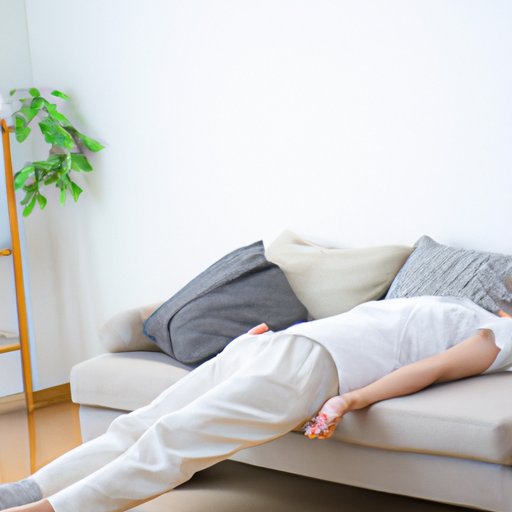Introduction
After a good workout, it’s normal to feel some soreness in your muscles. This is known as delayed onset muscle soreness (DOMS). DOMS usually occurs 12-24 hours after exercise and can last for several days. It can be uncomfortable and make it harder to move around or complete daily activities. Fortunately, there are a few strategies that can help reduce soreness after working out.
Warm Up Before Exercise
Before beginning any type of physical activity, it’s important to warm up. A warmup helps increase your body temperature, heart rate and blood flow. This can make your muscles more elastic and better able to handle the demands of exercise. Warmups also improve coordination, reaction time, balance and strength. Examples of warmup exercises include light jogging, jumping jacks, arm circles and dynamic stretches.
Stretch After Exercise
Stretching after exercise can help reduce soreness by increasing flexibility and range of motion. It can also help prevent injuries by improving posture and alignment. Stretches should focus on the major muscle groups used during the workout. Examples of stretches include calf raises, hamstring stretches, chest openers and quadriceps stretches.
Drink Plenty of Water
Staying hydrated is essential for reducing soreness after a workout. Water helps flush out toxins and waste products from your muscles, which can help reduce inflammation. It can also help replenish lost fluids and electrolytes. Aim to drink 8-10 glasses of water per day and at least 16 ounces before and after a workout.
Eat a Healthy, Balanced Diet
Eating a healthy, balanced diet can help reduce soreness after a workout. Foods like lean proteins, complex carbohydrates, fruits and vegetables provide essential nutrients for muscle repair and recovery. Eating plenty of protein can help rebuild muscles and reduce inflammation. Complex carbohydrates can provide energy for intense workouts. And fruits and vegetables are packed with antioxidants that can help reduce oxidative stress.

Get Adequate Rest and Recovery
Getting enough rest and recovery is key for reducing soreness after a workout. Resting allows your body to repair and rebuild muscles. Aim for 7-8 hours of sleep each night and allow at least 48 hours of rest between intense workouts. You can also supplement your rest with light activities such as walking or yoga.
Use Foam Rolling or Massage Therapy
Foam rolling and massage therapy can both be used to reduce soreness after a workout. Foam rolling helps break up scar tissue and promote blood circulation. Massage therapy can help reduce tension and break up adhesions in the muscles. Both techniques can help improve mobility and reduce pain and stiffness.
Conclusion
Soreness after a workout is normal, but there are several steps you can take to reduce it. Warming up before exercising, stretching after exercise, drinking plenty of water, eating a healthy, balanced diet, getting adequate rest and recovery, and using foam rolling and massage therapy can all help reduce soreness and improve recovery.
(Note: Is this article not meeting your expectations? Do you have knowledge or insights to share? Unlock new opportunities and expand your reach by joining our authors team. Click Registration to join us and share your expertise with our readers.)
